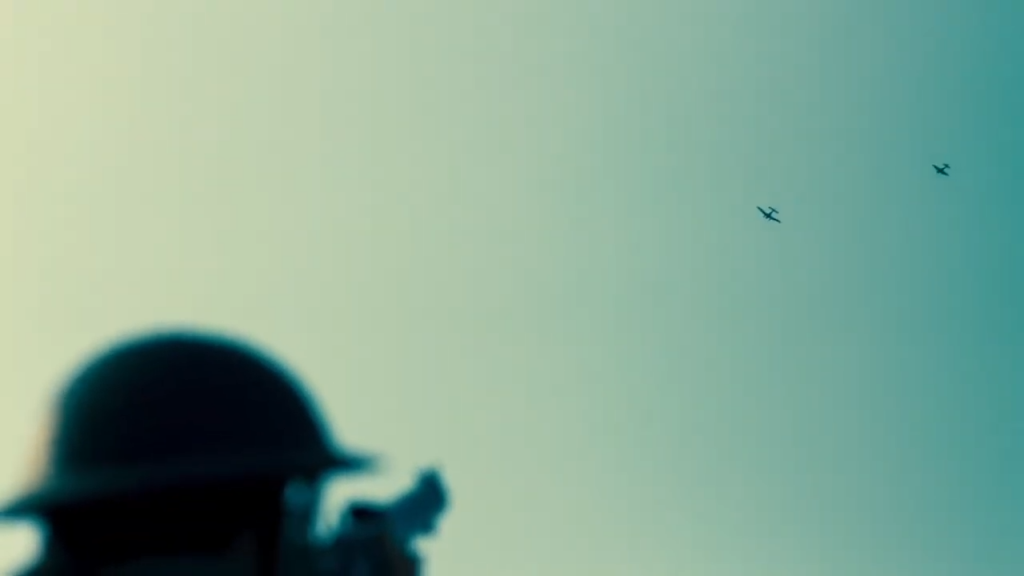Written by: Maeve Graham
I have been fascinated with film since I was little (You can thank star wars for that) and as time went on my love for it grew. Now today I’m a video production major who cant stop ingesting good movies and shows, and probably thinks too deeply about it all.
I genuinely believe that a cinematographer is a true artist, along with anyone else who works on a film/tv production (for the most part). A movie is a gigantic work of art from what can be 6-600 people. My true interest though lies in the visuals, it makes a movie to me. Like Spectre in the James Bond series, the movie, storywise, is not good, but the visuals are what make me watch it over and over. The man to thank for that is Hoyte Van Hoytema, and he is a true artist.
He grew up in Switzerland and later moved to Poland to attend film school. Which he tried many times to get into, but was rejected. Until he got into the “Lodz Film School” in Poland. Where he left without a degree, but with many film credentials. He worked on small documentaries from there, gaining traction in his area. It wasn’t until he worked on “LEt the right one in” that he got his international recognition. From there he has grown astronomically and helped produce some of my favorite movies.
He is a man of subtlety when he shoots, he likes to highlight the characters but is so careful to never overexpose them. more often than not his light source is off-camera and is so precise you wouldn’t even notice. Which I guess is his whole “thing”, he portrays the way he thinks the scene feels so well that we can’t help but feel it with him.
Her, for example, its set in a futuristic world where the main character falls in love with his operating system. Hoytema felt that the future would feel warm, almost like you’re in a dream, rather than what we usually imagine as cold and harsh. He thought it should be soulful, warm, and tactical, so eliminated almost all blue lights, using only red or yellow (or some mixture of them). It made the whole movie feel very intimate, which is exactly as it should feel, its about love.

He worked so incredibly close with others and was so meticulous about what he used that he got perfect shots. For the shots below he used an LED lightbox so he could achieve the perfect lighting without having to use post for it. He always tries to do everything practically, its never the same if you rely to heavily on post-production. Along with that he used an Alexa on set, which is a very clean digital camera. Its especially good at handling low light, which is perfect because night scenes often need the most work in post. The camera worked well with that LED light box and helped create some beautiful scenes.
(It’s worth noticing that the visuals were inspired by Rinko Kawauchi, the Japanese photographer whose work captures pristine moments from everyday life.

He started working with Christopher Nolan when he created “Interstellar” which as a story is already fantastic, but add the visuals, and it’s phenomenal. The same goes for “Dunkirk” Which is one of my personal favorites, That was filmed on 65mm IMAX film, most of the time the heavy camera was strapped to his shoulder making it already hard. Which impressive as is, but mix that with harsh weather and handheld action sequences and you’ve created something amazing. That movie is just a visual showcase of his talents, that also happens to be about WWII.
Hoytema describes his idea for the film as, “We wanted people to be immersed in the situation, in the terror. Disorientation is a very important emotion in those kids on the beach. You’re constantly bounced out of your comfort zone, and not being classic in your storytelling helps convey that feeling.” so with that he strapped the film camera to wings of dogfighting planes, and periscope cameras to pilots. All the while using natural lighting for his shots (As much as he could), making the whole experience as realistic as possible. Though he tried to film it all handheld when he could, finding those made the best shots for the film and portrayed what he really wanted for it. He constantly thanks his Key Grip who made sure he didn’t topple off a boat or run into actors, thanks to the heavy film camera.




While Id considered Roger Deakins and Robert Richardson for this project, they were a bit too well known. Roger Deakins has literally done everything (most recently 1917) and Robert Richards worked on almost half of Tarantino’s films. I loved the subtle nature of Hoytema and his genuine love for practical effects in film. His incredibly stunning style is so driven by emotion it makes me want to go film anything I can. He’s been an inspiration for past and present projects. I deeply respect his detail in light and color and I will be seeing anything he makes, Ad Astra is next on the list.



